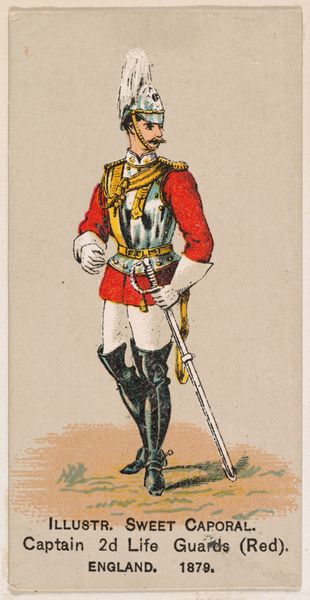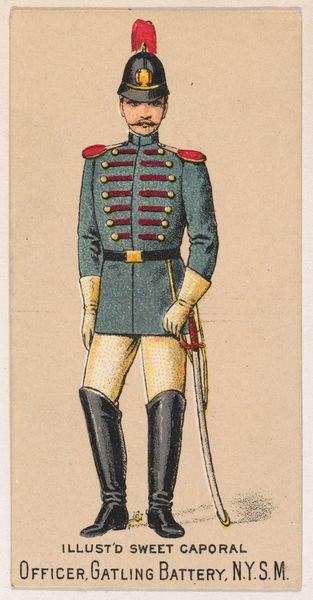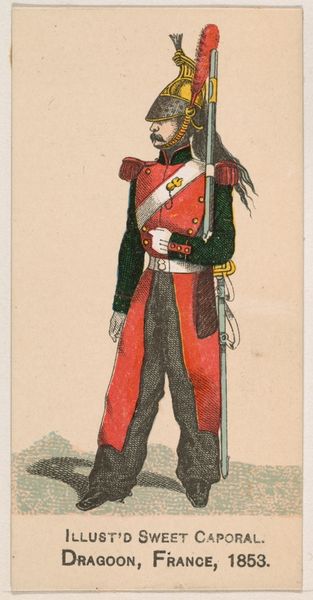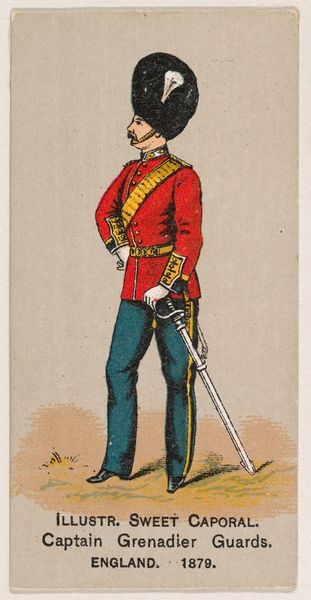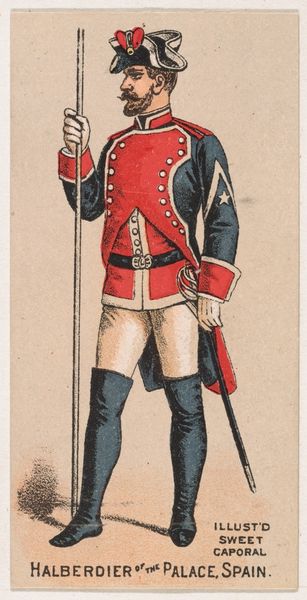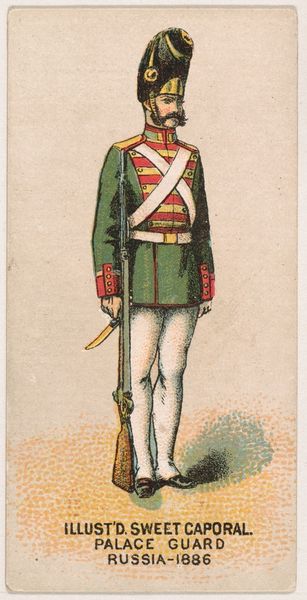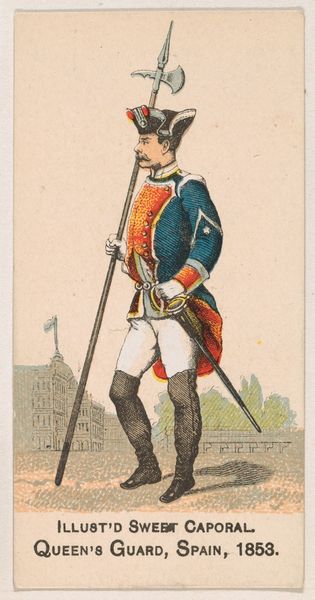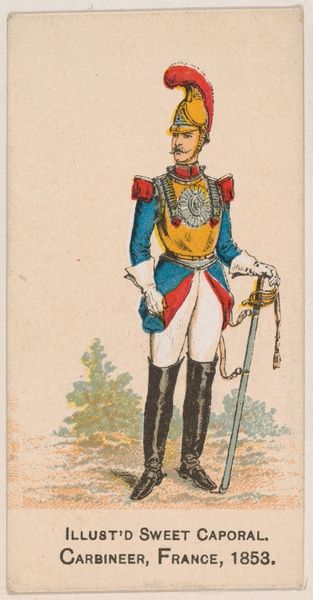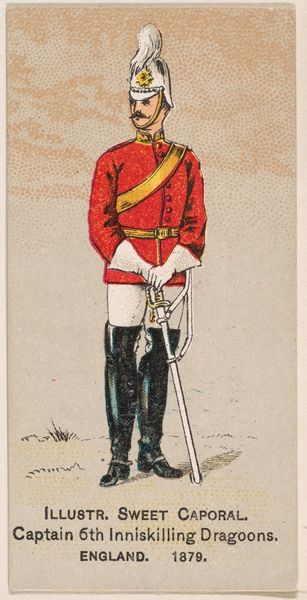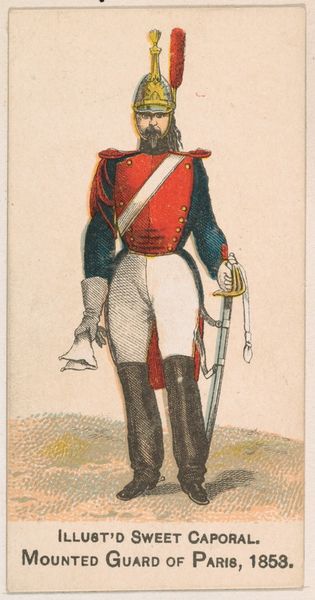
Captain, 42nd Highlanders, England, 1879, from the Military Series (N224) issued by Kinney Tobacco Company to promote Sweet Caporal Cigarettes 1888
0:00
0:00
drawing, print, watercolor
#
portrait
#
drawing
# print
#
figuration
#
watercolor
#
men
#
watercolour illustration
#
history-painting
#
academic-art
Dimensions: Sheet: 2 3/4 × 1 1/2 in. (7 × 3.8 cm)
Copyright: Public Domain
Curator: Here we have "Captain, 42nd Highlanders, England, 1879," an chromolithograph from the Military Series (N224). It was produced circa 1888 by Kinney Tobacco Company to promote Sweet Caporal Cigarettes. Editor: It strikes me as rather flat. The colors are bold—the scarlet of the jacket practically vibrates against the dark green of the kilt. The lack of depth creates a striking graphic quality. Curator: It’s fascinating how commercial interests appropriated military imagery. Cigarette cards became immensely popular, fostering a culture of collecting. This image taps into British military pride and empire, associating it with the pleasure of smoking. Editor: Precisely! The details are meticulously rendered, notice the precise rendering of the tassels on the sporran. However, it's stylized. The flatness minimizes volume, highlighting surface patterns. Semiotically, we read uniform, rank, and Scottish identity through these visual markers. Curator: The subject's identity is clearly defined; consider how the tartan becomes a symbol of Highland regiments—units romanticized for their bravery, as well as colonial campaigns. Mass production distributed this idea and linked it with tobacco consumption. Editor: There's also something performative about the pose. He's stiff, almost doll-like, yet powerful. The watercoloring softens what might otherwise be perceived as aggressive militarism. Note also the peculiar shadows and limited tonality—suggesting much about period techniques. Curator: What truly captivates me is the image’s duality: commercialism meeting patriotism. The card served not only to market cigarettes but to propagate notions about valor, regiment, and nationality that affected recruitment and popular opinion. Editor: And for me, the power of such a tiny object rests in the strength of its formal composition. By stripping away nuanced rendering in favor of symbolic display of details, it turns a man into an emblem. Curator: Looking at this little chromolithograph, we're reminded of how deeply intertwined image-making and cultural messaging have always been. Editor: Indeed—and how even the smallest piece of ephemera is designed around principles of clarity and impact!
Comments
No comments
Be the first to comment and join the conversation on the ultimate creative platform.
